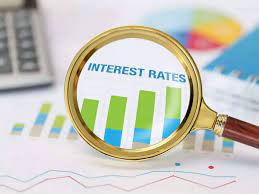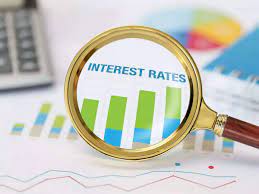
In order to combat inflation, the Federal Reserve intends to maintain raising interest rates; hence, a rise in corporate default rates is likely in the near future.
The corporate default rate increased in May, an indication that American businesses are struggling with both the uncertain economic outlook and increasing interest rates that make it more expensive to refinance debt.
According to Moody's Investors Service, there have been 41 defaults in the United States and one in Canada so far this year, which is the most of any region worldwide and more than double the same period in 2022.
Earlier this week, Fed Chairman Jerome Powell stated that until further progress is achieved in reducing inflation, expect additional interest rate hikes this year, albeit at a slower rate.
High interest rates, according to bankers and analysts, are the main cause of concern. A high cost of new debt is a problem for businesses that either require more liquidity or that need to refinance their heavy debt obligations.
Distressed exchanges, in which a firm exchanges its debt for another type of debt or repurchases the debt, are frequently one of the choices. Or, in extreme cases, a restructure may occur in or outside of court.
“Capital is much more expensive now,” said Mohsin Meghji, founding partner of restructuring and advisory firm M3 Partners. “Look at the cost of debt. You could reasonably get debt financing for 4% to 6% at any point on average over the last 15 years. Now that cost of debt has gone up to 9% to 13%.”
Meghji stated that since the fourth quarter, his company has been extremely active in a variety of industries. Although the most distressed enterprises have lately been impacted, he anticipates that companies with more stable finances will have problems refinancing because of high borrowing rates.
According to S&P Global Market Intelligence, as of June 22, there were 324 bankruptcy filings, which is not far behind the total of 374 in 2022. Through April of this year, there were more than 230 bankruptcy filings, which is the most for that time period since 2010.
The largest default in May occurred at emergency medical services company Envision Healthcare. According to Moody's, it had debts totaling more than $7 billion at the time of its bankruptcy filing.
Monitronics International, a provider of home security and alarm systems, Silicon Valley Bank, Bed Bath & Beyond, and Diamond Sports, the owner of a regional sports network, are among the companies that have filed for bankruptcy this year in the highest numbers, according to S&P Global Market Intelligence.
Tero Jänne, co-head of capital transformation and debt advising at investment bank Solomon Partners, noted that in many cases, these defaults had been anticipated for months, if not quarters.
“The default rate is a lagging indicator of distress,” Jänne said. “A lot of times those defaults don’t occur until well past a number of initiatives to address the balance sheet, and it’s not until a bankruptcy you see that capital D default come into play.”
By the end of the year, Moody's predicts that the worldwide default rate would increase to 4.6% from its historical average of 4.1%. By April 2024, that rate is anticipated to increase to 5% before starting to decline.
According to Mark Hootnick, co-head of capital transformation and debt advising at Solomon Partners, there will likely be more defaults. For a long time, "we've been in an environment of incredibly lax credit, where, frankly, companies that shouldn't be tapping the debt markets have been able to do so without limitations."
This is perhaps the reason defaults have happened in many businesses. There were also certain factors that were industry-specific.
“It’s not like one particular sector has had a lot of defaults,” said Sharon Ou, vice president and senior credit officer at Moody’s. “Instead it’s quite a number of defaults in different industries. It depends on leverage and liquidity.”
Along with heavy debt loads, Envision was destroyed by pandemic-related health problems, Bed Bath & Beyond suffered from having multiple stores when most customers preferred to purchase online, and Diamond Sports was harmed by the growth in people cutting their cable TV subscriptions.
“We all know the risks facing companies right now, such as weakening economic growth, high interest rates and high inflation,” Ou said. “Cyclical sectors will be affected, such as durable consumers goods, if people cut back on spending.”
(Source:www.cnbc.com)
The corporate default rate increased in May, an indication that American businesses are struggling with both the uncertain economic outlook and increasing interest rates that make it more expensive to refinance debt.
According to Moody's Investors Service, there have been 41 defaults in the United States and one in Canada so far this year, which is the most of any region worldwide and more than double the same period in 2022.
Earlier this week, Fed Chairman Jerome Powell stated that until further progress is achieved in reducing inflation, expect additional interest rate hikes this year, albeit at a slower rate.
High interest rates, according to bankers and analysts, are the main cause of concern. A high cost of new debt is a problem for businesses that either require more liquidity or that need to refinance their heavy debt obligations.
Distressed exchanges, in which a firm exchanges its debt for another type of debt or repurchases the debt, are frequently one of the choices. Or, in extreme cases, a restructure may occur in or outside of court.
“Capital is much more expensive now,” said Mohsin Meghji, founding partner of restructuring and advisory firm M3 Partners. “Look at the cost of debt. You could reasonably get debt financing for 4% to 6% at any point on average over the last 15 years. Now that cost of debt has gone up to 9% to 13%.”
Meghji stated that since the fourth quarter, his company has been extremely active in a variety of industries. Although the most distressed enterprises have lately been impacted, he anticipates that companies with more stable finances will have problems refinancing because of high borrowing rates.
According to S&P Global Market Intelligence, as of June 22, there were 324 bankruptcy filings, which is not far behind the total of 374 in 2022. Through April of this year, there were more than 230 bankruptcy filings, which is the most for that time period since 2010.
The largest default in May occurred at emergency medical services company Envision Healthcare. According to Moody's, it had debts totaling more than $7 billion at the time of its bankruptcy filing.
Monitronics International, a provider of home security and alarm systems, Silicon Valley Bank, Bed Bath & Beyond, and Diamond Sports, the owner of a regional sports network, are among the companies that have filed for bankruptcy this year in the highest numbers, according to S&P Global Market Intelligence.
Tero Jänne, co-head of capital transformation and debt advising at investment bank Solomon Partners, noted that in many cases, these defaults had been anticipated for months, if not quarters.
“The default rate is a lagging indicator of distress,” Jänne said. “A lot of times those defaults don’t occur until well past a number of initiatives to address the balance sheet, and it’s not until a bankruptcy you see that capital D default come into play.”
By the end of the year, Moody's predicts that the worldwide default rate would increase to 4.6% from its historical average of 4.1%. By April 2024, that rate is anticipated to increase to 5% before starting to decline.
According to Mark Hootnick, co-head of capital transformation and debt advising at Solomon Partners, there will likely be more defaults. For a long time, "we've been in an environment of incredibly lax credit, where, frankly, companies that shouldn't be tapping the debt markets have been able to do so without limitations."
This is perhaps the reason defaults have happened in many businesses. There were also certain factors that were industry-specific.
“It’s not like one particular sector has had a lot of defaults,” said Sharon Ou, vice president and senior credit officer at Moody’s. “Instead it’s quite a number of defaults in different industries. It depends on leverage and liquidity.”
Along with heavy debt loads, Envision was destroyed by pandemic-related health problems, Bed Bath & Beyond suffered from having multiple stores when most customers preferred to purchase online, and Diamond Sports was harmed by the growth in people cutting their cable TV subscriptions.
“We all know the risks facing companies right now, such as weakening economic growth, high interest rates and high inflation,” Ou said. “Cyclical sectors will be affected, such as durable consumers goods, if people cut back on spending.”
(Source:www.cnbc.com)





